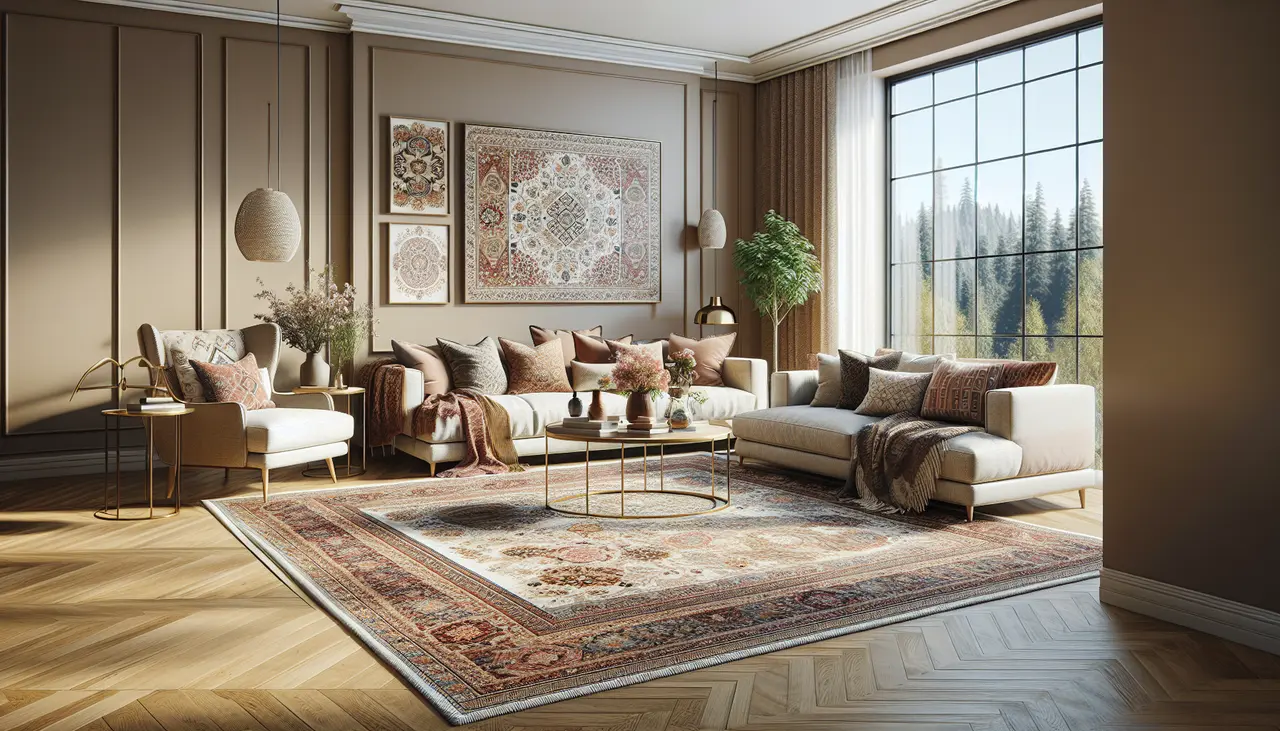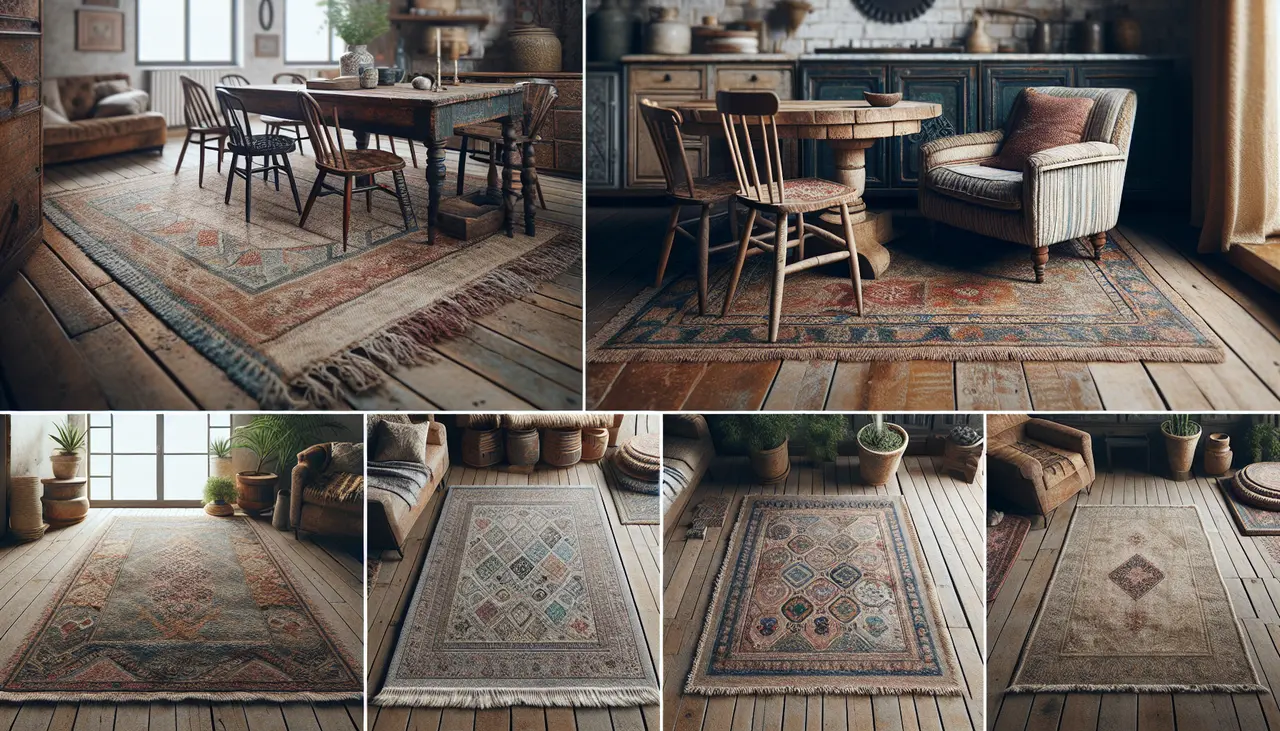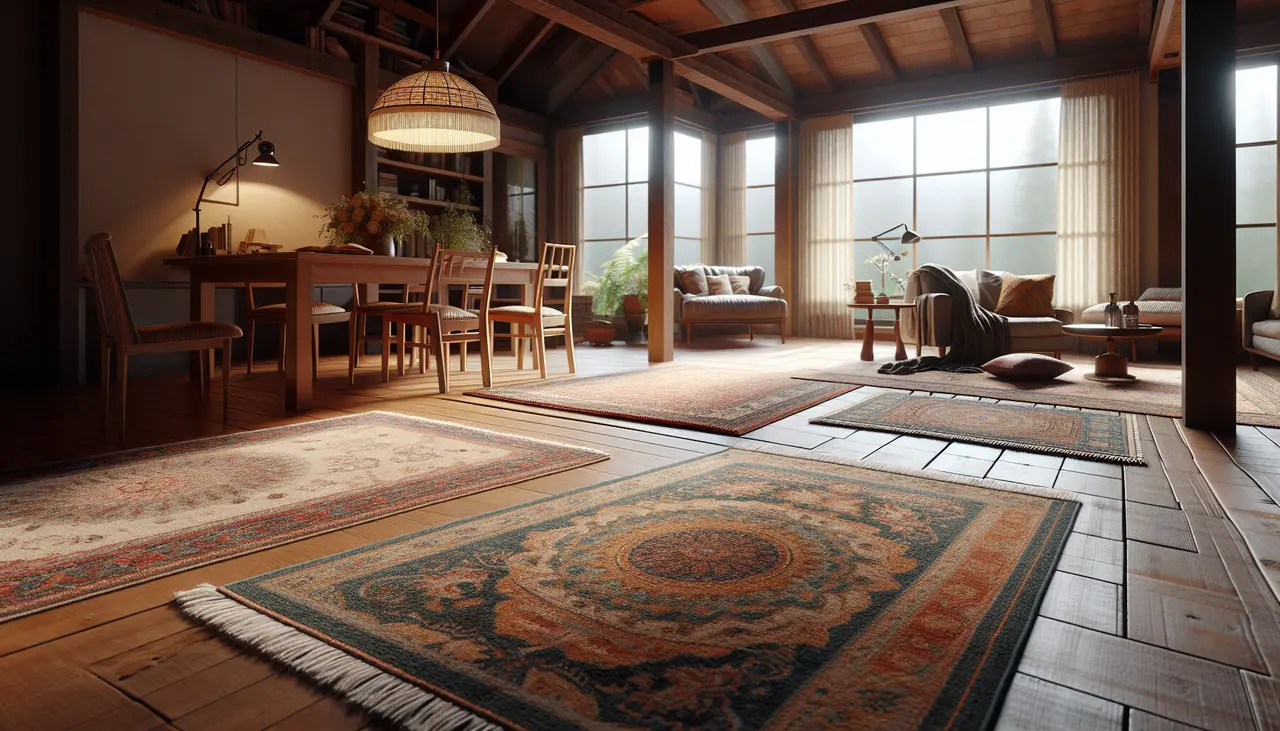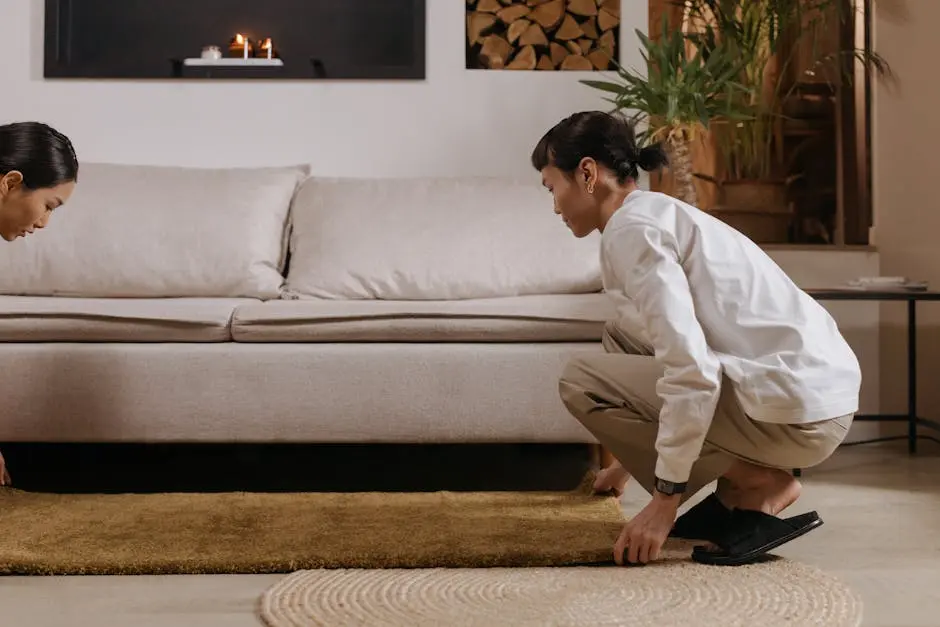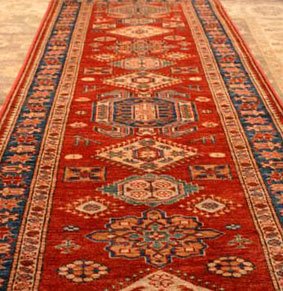Area rugs are more than just floor coverings; they’re transformative elements in home decor that can redefine your space. Discover the ways these versatile pieces can enhance the aesthetic and functionality of your home.
1. Adding a Splash of Color
Area rugs serve as an excellent way to introduce a splash of color to any setting, seamlessly blending with your existing decor or standing out to create a bold focal point. With a broad spectrum of color and pattern choices, they allow you to switch up your home aesthetic effortlessly—whether it’s to complement neutral tones or to bring a pop of vibrance to your living space. These rugs are like pieces of artwork, adding personality and interest to your environment while allowing for easy modifications as seasons change or personal tastes evolve.
Choosing the right color can influence not only the look but also the feel of a room. Bright, vibrant colors can inject energy and warmth, whereas cooler tones may foster tranquility and calmness. It’s essential to consider how the colors of your area rug align with your existing furniture and decor to create a harmoniously balanced setting. This not only enriches your visual landscape but also sets the mood for gatherings and everyday relaxation.
2. Creating Defined Spaces
In open floor plans, area rugs help to delineate spaces, providing a clear distinction between functional zones such as living, dining, and working areas. This is especially beneficial in large rooms where furniture arrangements may otherwise appear to float aimlessly without any definition. By anchoring furniture groupings, rugs can guide the flow of activity and maintain order within a multifunctional space.
Adding an area rug as a central feature in a specific zone can also elevate the room’s purpose—making a reading nook feel cozier or a dining space more inviting. This easy division encourages intuitive movement and enhances the overall functionality of a space. Furthermore, using different shaped and sized rugs can offer unique layout opportunities, encouraging creativity in configuring your furniture and decorations.
3. Enhancing Comfort and Warmth
Area rugs add an extra layer of comfort, making hard floors softer underfoot. In regions with colder climates, they can be pivotal in insulating the room, offering warmth during colder months. This comforting layer not only improves the physical temperature but also adds an emotional warmth, creating a nurturing environment throughout your home.
Moreover, the texture of a well-chosen rug brings tactile pleasure, which can substantially improve the experience of the space. Walking barefoot becomes a soothing, sensory experience. For families with young children, this is often a safe spot for play and exploration—a cushioned safety net in bustling living rooms. Comfort is holistic; it’s about creating spaces that cater to both the body and the mind, inviting you to slow down and enjoy each step in your home.
Besides warmth, the psychological effect of comfort contributes significantly to how you perceive your space. Rugs contribute to creating an environment that feels friendly and welcoming—an important factor in turning houses into homes, a sentiment cherished by many rug enthusiasts Discovering the Beauty of Oriental Rugs in the East Bay.
4. Improving Acoustics
By absorbing sound, area rugs reduce echo and noise levels, creating a more tranquil environment in high-traffic areas of your home. This is a substantial benefit, particularly in homes with hardwood flooring where sound tends to bounce off hard surfaces, causing disturbances. An area rug can be an elegant solution to managing sound reverberation, making conversation more comfortable and media consumption more enjoyable.
5. Showcasing Artistic Expression
With diverse patterns and designs, area rugs function as a canvas for artistic expression, allowing you to introduce unique artistic elements into your decor. Rugs can act as a story-telling piece, reflecting either the cultural heritage of oriental designs or the modern flair of contemporary art. They provide a way to integrate different aesthetics into your home, appealing to varied tastes and preferences.
Consider an oriental rug as a statement piece, showcasing centuries-old traditions and design intricacies within your space. Such choices not only enrich the narrative of your home but also spark conversation among guests, inviting them to engage with their surroundings beyond the superficial.
6. Protecting Your Floors
Area rugs provide a protective barrier for your floors, preventing damage from foot traffic, furniture, and other potential hazards. They are particularly useful for hardwood floors that can suffer from scratches or dings over time. Placing a durable rug in high-traffic areas not only preserves the pristine condition of your flooring but also reduces maintenance costs.
Furthermore, rugs can act as a safeguard against spills or stains, trapping dirt and debris before it reaches the floor. This additional layer can be especially valuable in dining areas or children’s playrooms, where incidents are an inevitable part of daily life. Rugs with natural fibers, like wool or jute, are particularly tough and resilient, often able to withstand intense use while maintaining their aesthetic appeal.
7. Offering Versatile Style Options
From modern to traditional, area rugs come in countless styles, offering an easy way to shift the aesthetic of any room to match your evolving tastes. Whether you favor minimalist and clean lines or ornate and elaborate patterns, there is a rug out there that aligns perfectly with your vision.
The versatility in design extends to materials and textures as well, from plush and luxurious shags to sturdy flatweaves. This variety allows for the experimentation of aesthetics and textures without the need for dramatic decor overhauls. Their adaptability is one of the reasons why area rugs are cherished in dynamic households—making them a staple choice in interior design frameworks.
8. Simplifying Seasonal Transitions
Easily swap out area rugs to reflect seasonal changes, enabling you to refresh your space with minimal effort throughout the year. Seasonal dressing of your home can be as simple as changing a lightweight, airy rug for a denser, more warming one as the colder months roll in.
The tactility and color theory applied in selecting different rugs for different times of the year can renew the aesthetic energy of your spaces effectively. The changing visuals not only enhance the visual pleasure but also keep the decor dynamic and lively, ensuring your home feels vibrant and alive regardless of the season.
